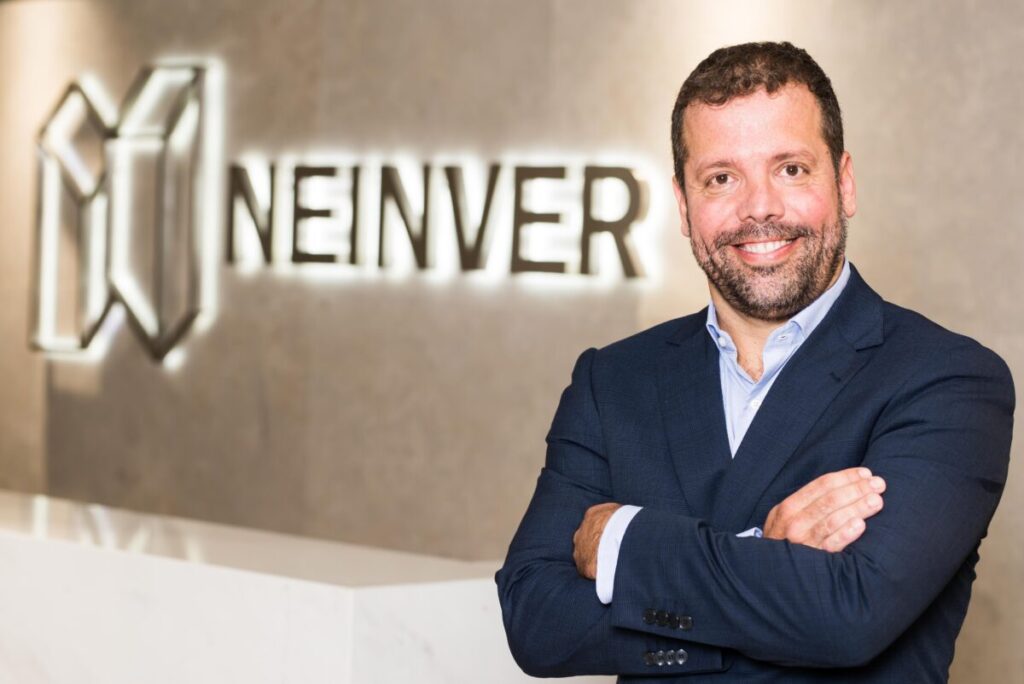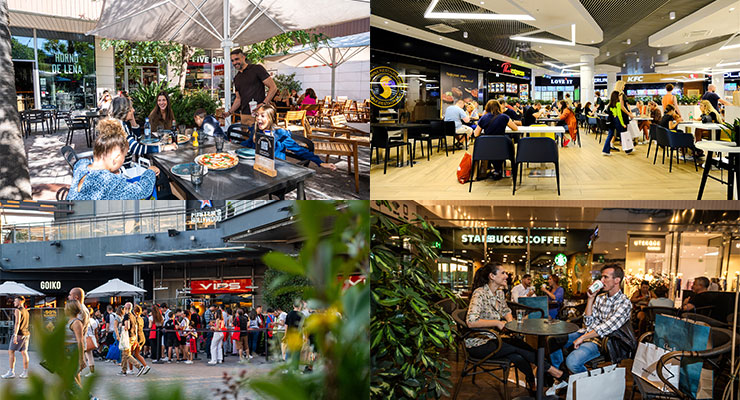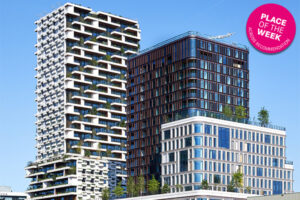ACROSS: F&B has long been a neglected aspect at outlet centers. How would you describe the current role of F&B in your outlets?
Joan Rouras: Food is undoubtedly one of the main trends to watch in the outlet industry today, and it plays a crucial role in our growth strategy, so much so that we have a specific F&B position in our leasing team. We began to see a shift 15 years ago, as the rise in online shopping pushed landlords and operators to look into new ways of attracting visitors. More recently, the pandemic brought an increased appetite for enjoying quality time and sharing it with others, where the F&B sector has a vital role to play. In the past years, we have seen a significant increase in demand for F&B space within the outlet sector, with F&B sales climbing approximately 5% more than retail sales. Consumers can find bargains online and in-store, so if we want to draw them into our centers, we have to make it worth their while, and part of that means having the right F&B offering. The competitive advantage of our centers is the combination of price, top brands, and the overall experience. If we create an environment that goes beyond shopping and gives visitors time to relax and enjoy a meal, this tends to have a positive effect on dwell time. By doing this, we not only give our retailers extra time to sell, but we also have a beneficial impact on customer loyalty and repeat visits.
ACROSS: What is your portfolio’s F&B share, and how did it change over the last decade?
Rouras: The F&B share varies across our portfolio depending on a range of aspects such as location, catchment, and any regulations that limit F&B GLA. Standout examples include two of our key destinations in Madrid, which combine an outlet center and a retail & leisure park. Nassica and Alegra retail & leisure parks were strategically developed next to the Getafe and San Sebastian de los Reyes outlet centers to create a comprehensive shopping destination, where the share of both retail and food are very similar in terms of space and sales. Alegra reached 100% occupancy this year, demonstrating the center’s resounding appeal for retailers and shoppers.
We have been working to allocate more space to food across our portfolio, and we believe that we can double our offering based on current demand. In fact, we have increased the F&B share from below 5% to 10% or over, depending on the strategy for each asset. For instance, in Viladecans The Style Outlets in Barcelona – an open-air center that benefits from tourism day visitors from across the affluent catchment and nearby offices – the share has risen from 5% to 18%. Coruña, The Style Outlets, will reach 10% by the end of this year, up from around 3% at the beginning of 2023, in line with the center’s growth strategy.


ACROSS: Can you describe how you design F&B offerings using examples from your portfolio?
Rouras: Curating spaces for F&B retailers differs from designing spaces for fashion or other traditional retail. It requires a different type of expertise and approach, and as such, we’ve also had to adapt to bring these spaces to life. Aspects such as creating space for terracing, ensuring a welcoming ambiance that offers maximum comfort, and giving the right visibility to spaces are vital to delivering a unique experience. However, there is no one-size-fits-all approach. Every center needs something different. For instance, Viladecans The Style Outlets is the perfect example of how F&B can be a successful anchor when applying the right strategy. The center’s dining offer has grown and today features 15 food options strategically distributed, including a square with a range of restaurants and terraces currently being restyled to offer a fully-rounded experience.
Another example is the food court at FACTORY Krakow, a highly effective format that increases the offer by creating a shared seating area. Food trucks and pop-up restaurants continually offering something different make for a highly dynamic proposal. At Nassica and Getafe The Style Outlets, for example, the food trucks have increased the food offer by 20%, giving customers much more to choose from.
What is clear to us is that each center has different needs, which means we have to create and execute various projects that must be adapted to the needs of the customer, and the closer we are to them, the better the result will be.
ACROSS: How do you find the right offer for the respective location? How do the F&B offers differ depending on the location? What role does the growing trend towards regionality play in particular?
Rouras: The offer is tailored to each center depending on its location, catchment, and visitor profile, among other factors. We actively track customers’ needs and new trends to ensure we offer them exactly what they are looking for and a standout offering. For example, Vicolungo The Style Outlets, located in Italy near Milan, features ANTONINO, il Banco di Cannavacciuolo, a gourmet space created by a renowned Michelin-starred chef where visitors can enjoy a unique selection of irresistible delicacies to eat in or take away. The trend is not just about quantity; customers seek a better-quality and more varied offering, expecting to see both international and local options. This is especially true for tourists keen to sample local flavors and see a range of international options on offer. In this regard, we have set the “80-20” rule, meaning 80% restaurant chains and 20% local offer. As for variety, we aim to strike the right balance in each center and country, finding the right mix of fast food and fast casual options, dining experiences, cafés & bars, and confectionery. Some examples of regional names at our centers include Green Vita in Barcelona, Chatter Café in our centers in Madrid, Dutch Cookies in Amsterdam, The Style Outlets, Kuchnia Marche in FACTORY Ursus, and Emozioni d’Italia in Vicolungo The Style Outlets.


ACROSS: What concepts or F&B trends are you particularly looking for? What are the consumers asking for?
Rouras: I would highlight three key elements in terms of trends. The first of these is sustainability. Consumers are increasingly aware of the environmental impact of food. They want to see more and more seasonal products and local ingredients on offer, a reduction in food waste, and more recyclable or biodegradable packaging — secondly, digitalization. Consumers have never been so tech-savvy, and restaurants must be able to offer an efficient and seamless digital experience. And finally, innovation. Consumers seek innovative and unique dining experiences: fusion food, avant-garde culinary techniques, and seasonal menus.
ACROSS: Now that F&B has developed so well, how important are entertainment concepts for outlet centers, and how will they develop?
Rouras: We have to give our customers as many reasons to visit our centers as possible – and that means providing them with a place where they can enjoy everything from food and fashion to leisure and entertainment, all under the same roof. Ultimately, the overall customer experience counts, with brands, architecture, atmosphere, dining, and entertainment all playing a role. A shopping day out at our outlets already offers entertainment. Still, we are also looking carefully into the influence of new forms of leisure and entertainment and bringing in fresh concepts. The great challenge lies in the fact that leisure is constantly changing, which demands a dynamic approach. Again, you must keep pace with your customers’ evolving needs and preferences. An example is our “Jungle Night,” an award-winning initiative celebrated twice a year, combining discounts, extended opening hours, concerts, and other featured attractions. The aim is to enhance the shopping experience and add even more value to consumers and brands.

Joan Rouras
Joan Rouras, Head of Leasing and Retail at NEINVER






